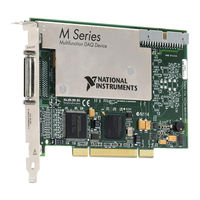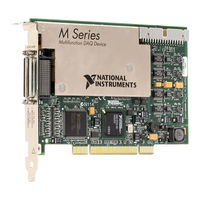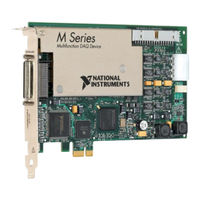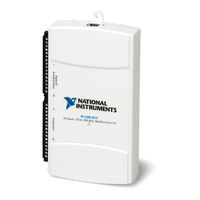National Instruments M Series Manuals
Manuals and User Guides for National Instruments M Series. We have 8 National Instruments M Series manuals available for free PDF download: User Manual, Installation Manual
National Instruments M Series User Manual (299 pages)
Multifunction I/O Modules and Devices
Brand: National Instruments
|
Category: Data Loggers
|
Size: 3 MB
Table of Contents
Advertisement
National Instruments M Series User Manual (298 pages)
Multifunction I/O Modules and Devices
Brand: National Instruments
|
Category: I/O Systems
|
Size: 5 MB
Table of Contents
National Instruments M Series User Manual (298 pages)
Multifunction I/O Modules and Devices
Brand: National Instruments
|
Category: Data Loggers
|
Size: 5 MB
Table of Contents
Advertisement
National Instruments M Series User Manual (298 pages)
Brand: National Instruments
|
Category: I/O Systems
|
Size: 5 MB
Table of Contents
National Instruments M Series User Manual (298 pages)
Brand: National Instruments
|
Category: I/O Systems
|
Size: 5 MB
Table of Contents
National Instruments M Series User Manual (23 pages)
Brand: National Instruments
|
Category: Storage
|
Size: 3 MB
Table of Contents
National Instruments M Series User Manual (14 pages)
Devices
Brand: National Instruments
|
Category: I/O Systems
|
Size: 0 MB
National Instruments M Series Installation Manual (3 pages)
Externally Powered USB Panel Mounting Kit
Brand: National Instruments
|
Category: Racks & Stands
|
Size: 1 MB
Table of Contents
Advertisement
Related Products
- National Instruments myRIO-1950
- National Instruments MIO-64XE-10
- National Instruments MIO-64E-1
- National Instruments MICROPROSS MP500 TCL3
- National Instruments Measurement Studio
- National Instruments Motion Axis Router MCA-7724
- National Instruments MXI-2
- National Instruments mmRH-3642
- National Instruments MXI-Express x4 Series
- National Instruments MMS-9068






